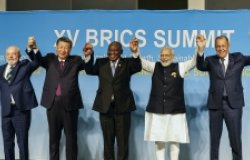176. The Role of The Hungarian Non-Profit Sector In Post-Communist Society
Since major changes swept through Hungary in the late 1980s, there has been dramatic growth in the non-profit sector of society. From just under 8,800 non-profit organizations in 1989 the sector grew to more than 43,000 in 1995. The most rapid growth occurred in 1990 and 1991 but there has been steady expansion in succeeding years. In 1995, there were 27,685 associations, which are membership-based organizations, and 15,650 foundations that are property-based.
Although the communist authorities eliminated the legal form of the foundation from the 1950s until the late 1980s, some voluntary associations were permitted to exist. Primarily these associations were active in sports, leisure, and hobby activities, and volunteer fire brigades. During the 1980s new associations began to form in education, culture, social welfare services, and other activities. The 1989 Law on Associations guaranteed the freedom to found associations and, in 1990, the Civil Code was amended to allow foundations to operate freely.
In the mid-1990s, the Hungarian non-profit sector was characterized by its diversity. One-third of the non-profit organizations were still involved in the sports, leisure, and hobby activities that were permitted during the communist era. But more than one-fifth of organizations were involved in two activity areas: professional and economic interest representation and culture.
Non-profit organizations were also involved in social policy, with about 22 percent of organizations active in education, social welfare provision, and health. The nonprofit sector plays two important roles in social policy: service provision and advocacy or interest representation.
The Service Provision Role
Social policy retains the legacy of the former era, with the government serving as the main financier and provider. Despite state dominance, the role of non-profit organizations in social policy has been increasing and was projected to grow at a faster rate than social policy expenditures as a whole during the 1990s. The non-profit sector share of social policy expenditure expanded from only 1.1 percent in 1992 to an estimated 7.6 percent in 1999, while at the same time the overall share of spending on social policy declined slightly from 12.7 percent to 11 percent of the Gross Domestic Product. The non-profit share of spending in social service provision is more than 20 percent and is even higher in services to certain populations, like institutionalized disabled children and the homeless.
Three important points can be made about the social service provision role of the non-profit sector. First, behind its growing share in the delivery of social services is the lower per client operating cost of non-profit organizations, only about one-half that of state service for institutionalized populations. Second, in areas where non-profit organizations have a large share of service delivery, like homelessness, they may take the lead in the development of standards of service. Third, the small size and closeness to clients of non-profit organizations helps to bring pluralism to service delivery.
The Advocacy Role
Despite high expectations over the development of civil society, non-profit organizations have only limited voice in Hungarian social policy making. Two factors limit the advocacy role of the non-profit sector in Hungary. First, the small weight of the sector in service delivery means that non-profit organizations have little power and, correspondingly, limited voice in policy development and implementation. Second, the institutional structure of politics and policy making magnifies the small weight of the sector. Government remains the dominant institution in society and is highly centralized. Access to state power depends upon informal ties to the ministerial bureaucracy and political parties. Most non-profit organizations have not developed these informal ties.
There are exceptions where historical ties and organizational weight provide access to government for non-profit organizations. The Red Cross and the large associations representing client populations have a history dating back to the previous regime. Along with the Knights of Malta, which received backing from the conservative government of the early 1990s, these select non-profit organizations gain a disproportionate amount of support from the state budget. Professional educators active in non-profit schools also have been successful in obtaining state support originally targeted for church schools, in large part because they have been well organized and have had good ties to political parties.
The large associations representing client populations play an important role in advocacy because they have routine access to government decision makers and their large size allows them to represent themselves as a voice for clients. These associations, however, have an ambiguous role, functioning much like quasi-governmental organizations. A large percentage of their budgets comes from the state and their leaders routinely serve in various decision-making roles. These factors may compromise the critical capacity of such organizations as advocates for clients. At the same time, many of these associations are involved in offering services and they become competitors with smaller non-profit organizations that also serve clients.
Despite these successes in advocacy and access to policy making, the majority of non-profit organizations are limited in the voice they can bring to social policy and must draw resources from a variety of state and non-state sources, a process which occupies much of their time.
Conclusion
While the Hungarian non-profit sector has grown with respect to both its service and advocacy roles, its place in society is largely determined by broader political processes and policy preferences. The dependence of Hungarian non-profit organizations on political trends and state policy is not unique but mirrors the relationship between the non-profit sector and the political sphere throughout the world. The non-profit sector depends on direct subsidies and payments from government as well as indirect subsidies arising through the tax system. These policy decisions are embedded in wider political decision making about state support to private action and the use of non-state actors to achieve public aims.
The Hungarian non-profit sector received early support from political elites who sought to create a legal framework for non-state organizations. But the inherent centralizing tendencies of Hungarian politics and the state have continued to present strong challenges to the further development of the non-profit sector. The expansion of the social service role of the sector is in large part due to two political trends: government attempts to reinvigorate church institutions and economic pressures reduce state budgetary expenditure.
The drive to seek less expensive alternatives to state social service provision is likely to lead to further expansion of the service provision role of the non-profit sector. With that increased role an expansion of political access and the advocacy role of non-profit organizations is also likely. However, the advocacy role will remain limited by the institutional structure of Hungarian politics and policy making—access and participation will remain informal and dependent upon personal networks.
Dr. Jenkins spoke at an EES Noon Discussion on February 23, 1999.
About the Author
Robert Jenkins
Read More
Global Europe Program
The Global Europe Program is focused on Europe’s capabilities, and how it engages on critical global issues. We investigate European approaches to critical global issues. We examine Europe’s relations with Russia and Eurasia, China and the Indo-Pacific, the Middle East and Africa. Our initiatives include “Ukraine in Europe” – an examination of what it will take to make Ukraine’s European future a reality. But we also examine the role of NATO, the European Union and the OSCE, Europe’s energy security, transatlantic trade disputes, and challenges to democracy. The Global Europe Program’s staff, scholars-in-residence, and Global Fellows participate in seminars, policy study groups, and international conferences to provide analytical recommendations to policy makers and the media. Read more










